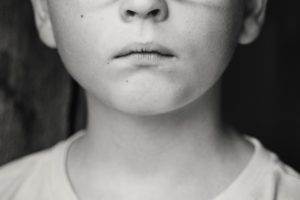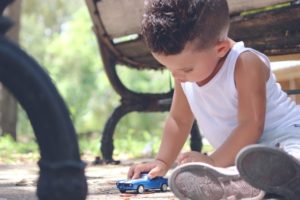We know childhood affects us as adults, but we may be unaware of the extent to which this is true. Childhood trauma, whether you know about it or not, may be impacting you or someone you love in ways you don’t realize. Identifying trauma symptoms and finding healing can make an immense difference in your life today. Newport Beach Christian Counseling is here to help you uncover and heal from past wounds, guiding you towards a healthier, more fulfilled life.
 Trauma isn’t something we want to spend a lot of time thinking about, but it’s a vital topic to consider, not just for the adults who are affected with post-traumatic stress, but for children who’ve experienced it.
Trauma isn’t something we want to spend a lot of time thinking about, but it’s a vital topic to consider, not just for the adults who are affected with post-traumatic stress, but for children who’ve experienced it.
Let’s start by defining what we mean by childhood trauma. The National Child Trauma Stress Network defines it this way: “When a child feels intensely threatened by an event he or she is involved in or witnesses, we call that event a trauma.”
Risk Factors for Childhood Trauma
The Trauma Services Network lists a number of factors that increase the risk for childhood trauma, although they are not established as definitive causes. They are:
- Disabilities
- Social isolation (family)
- Lack of parental understanding of child development or children’s needs
- Domestic abuse (parents’ history)
- Poverty
- Family disorganization/violence
- Lack of cohesion
- Substance abuse
- Young, single non-biological parents
- Poor parent-child relationships and negative interactions
- Parental thoughts and emotions supporting maltreatment behaviors
- Parental stress and distress, including depression or other mental health conditions
- Community violence
While some of these factors may constitute traumatic experiences, some are not directly traumatic but contribute to an unsafe environment that increases the risk that the child will experience trauma. If, for example, you are a parent of a child with disabilities and you are socially isolated and/or a single parent, you may not be able to change all of those factors, but you can be aware of the risks for trauma and take action to make your child’s environment as safe as possible.
Types of Childhood Trauma
The NCTSN lists several types of trauma that are commonly experienced in childhood:
- Physical abuse
- Sexual abuse
- Early childhood trauma (ages 0-6)
- Traumatic grief
- Medical trauma
- Complex trauma
- Domestic violence
- Bullying
- Community violence
- Refugee trauma
- Disasters
- Terrorism and violence
Look Through Their Eyes is another organization that works to identify, prevent, and heal childhood trauma. Their list of most common childhood trauma includes most of those listed above, as well as:
- Accidents
- Chaos or dysfunction in the house (such as domestic violence, parent with a mental illness, substance abuse or incarcerated)
- Emotional abuse or neglect
- Separation from a parent or caregiver
- Stress caused by poverty
 From both of these lists, we can see that abuse, neglect, and violence within the family cause traumatic stress for children, and so do wider-scale disasters, war, and terrorism.
From both of these lists, we can see that abuse, neglect, and violence within the family cause traumatic stress for children, and so do wider-scale disasters, war, and terrorism.
So, if a child experiences any of these things, how does it affect them? How do they respond?
The difference between a child’s stress response and an adult’s stress response is that children are still developing. They don’t have the understanding that adults do, and their brain hasn’t finished growing.
This reality means that trauma can have a different impact as the child grows older than it would on an adult who has already reached full cognitive development.
Physical Responses to Trauma
While most people are aware of the “fight or flight” response to frightening events, the “freeze” response is not as well known. “Freeze” is a type of dissociation that means the person perceives the threat to be so severe that neither running nor fighting back is a possibility.
Freezing is the body’s reaction to being flooded with stress. A child, who is smaller and more vulnerable in every way than an adult, may experience the freeze response in a variety of different traumatic situations.
What happens if a child is exposed to trauma over a long period of time? Their trauma response continues, and this unhealthy state of physical stress, with hormones such as adrenaline and cortisol coursing through the body, can lead to PTSD (post-traumatic stress disorder) or C-PTSD (complex PTSD). The American Psychological Association notes that, “Children exposed to chronic and pervasive trauma are especially vulnerable to the impact of subsequent trauma.” (APA)
Regardless of whether the trauma response turns into a full-fledged disorder or not, the stress it causes can make a lasting impact on a child’s development.
How Trauma Affects Development
Researchers have noted that trauma in childhood can actually reduce the size of the brain cortex, which is a significant effect on a child’s physical and mental health and development.
Besser van der Kolk, who wrote the book The Body Keeps the Score: Brain, Mind, and Body in the Healing of Trauma, explains that, “Children’s brains are literally shaped by traumatic experiences, which can lead to problems with anger, addiction, and even criminal activity in adulthood.” In an interview with Side Effects Public Media, he explained:
 “The human brain is a social organ that is shaped by experience, and that is shaped in order to respond to the experience that you’re having. So particularly earlier in life, if you’re in a constant state of terror; your brain is shaped to be on alert for danger, and to try to make those terrible feelings go away.
“The human brain is a social organ that is shaped by experience, and that is shaped in order to respond to the experience that you’re having. So particularly earlier in life, if you’re in a constant state of terror; your brain is shaped to be on alert for danger, and to try to make those terrible feelings go away.
The brain gets very confused. And that leads to problems with excessive anger, excessive shutting down, and doing things like taking drugs to make yourself feel better. These things are almost always the result of having a brain that is set to feel in danger and fear.
As you grow up and get a more stable brain, these early traumatic events can still cause changes that make you hyper-alert to danger, and hypo-alert to the pleasures of everyday life…
If you’re an adult and life’s been good to you, and then something bad happens, that sort of injures a little piece of the whole structure. But toxic stress in childhood from abandonment or chronic violence has pervasive effects on the capacity to pay attention, to learn, to see where other people are coming from, and it really creates havoc with the whole social environment.”
As an adult who experienced childhood trauma, you may have mental health effects, including anxiety or expression, continued PTSD, substance use disorders, problems with relationships, or struggles with self-harm and suicidal ideation. Even if you do not have serious mental health problems, you may struggle with psychological issues. Psychology Today discusses four subtle but real effects of childhood trauma in adulthood:
Creating a false self that we think will be accepted (burying feelings, wearing a mask)
- Victimhood thinking (negative self-talk)
- Passive-aggressiveness (suppressed anger)
- Passivity (buried feelings = buried personhood)
Of course, these things can lead to problems with relationships and difficulty at work and in other areas of your adult life.
Harvard Health has reported on research conducted on adverse childhood experiences, shortened to ACEs, many of which include traumatic experiences, and these experiences have drastic effects on health, and are linked to negative outcomes in adulthood.
The bottom line is, if you have experienced childhood trauma—even if you are unaware of it—you may still be suffering from post-traumatic stress as an adult. And this stress can manifest in a number of ways: physically, mentally, and psychologically.
Child Trauma Symptoms
How can parents, caregivers, or teachers know when a child is exhibiting trauma symptoms, even if they are unaware of the trauma itself?
A child who is experiencing trauma, or has post-traumatic stress, may exhibit signs of clinginess, fear, aggression, and impulsivity, and have difficulty regulating their behavior and emotions. They may become fixated on death and/or safety. They might have trouble eating or sleeping. Other common symptoms are irritability, difficulty focusing, or separation anxiety.
While just one or two of these symptoms may be part of a normal developmental stage for a child, if you know a child who is exhibiting several of these symptoms, it may be time to find out if there is a more serious explanation.
Preventing and Responding to Childhood Trauma
Although it’s not possible to remove all risk factors for childhood trauma, we can work to create safe environments for children, and then educate responsible adults in how to respond in the best way to alleviate the aftereffects of trauma.
 The National Child Traumatic Stress Network says that resilience is the biggest factor in a positive outcome for childhood trauma, and the biggest factor in resilience is the presence of one consistent caregiver in the child’s life:
The National Child Traumatic Stress Network says that resilience is the biggest factor in a positive outcome for childhood trauma, and the biggest factor in resilience is the presence of one consistent caregiver in the child’s life:
“Research on resilience in children demonstrates that an essential protective factor is the reliable presence of a positive, caring, and protective parent or caregiver, who can help shield children against adverse experiences. They can be a consistent resource for their children, encouraging them to talk about their experiences, and they can provide reassurance to their children that the adults in their lives are working to keep them safe.”
The American Psychological Association adds that “The majority of children and adolescents manifest resilience in the aftermath of traumatic experiences. This is especially true of single-incident exposure.”
So, in a way, it’s possible to set children up for success both before and after any traumatic events have occurred. According to the Trauma Survivors Network, the following are protective factors in a child’s life that can help them with trauma and recovery:
- Supportive family environment
- Nurturing parenting skills
- Stable family relationships
- Household rules and monitoring of the child
- Parental employment
- Adequate housing
- Access to health care and social services
- Caring adults outside family who can serve as role models or mentors
- Communities that support parents and take responsibility for preventing abuse
In other words, a child needs a safe environment with adult support. The good news is that if you are a parent or caregiver of a child, you can be that safe person for them, a consistent presence, and you can make a big difference for that child.
What about a child who has already undergone one, or multiple traumatic experiences? There are evidence-based treatment options, including Cognitive-Behavioral Therapy (CBT) with a trauma focus. There is even inpatient treatment if necessary. The Gil Institute recommends trauma-focused integrated play therapy, and there is some evidence that neurofeedback can successfully treat trauma, even in children.
The bottom line is not to hesitate to get a child evaluated for professional treatment. It can make a big difference in the possibility of a positive outcome and trauma healing.
If you are an adult and you think or know that you were traumatized as a child, it’s not too late to get help. You can explore childhood trauma with a licensed counselor or therapist, and work through treatment for those issues.
Revisiting the past can be very painful, and a licensed counselor at Newport Beach Christian Counseling can help you walk through the process safely and compassionately.
Resources:
- https://www.nctsn.org/what-is-child-trauma/trauma-types
- https://www.ecmhc.org/tutorials/trauma/mod2_3.html
- http://lookthroughtheireyes.org/
- https://www.psychologytoday.com/us/blog/evolution-the-self/201507/trauma-and-the-freeze-response-good-bad-or-both
- https://www.nctsn.org/what-is-child-trauma/trauma-types/complex-trauma/effects
- https://www.traumasurvivorsnetwork.org/traumapedias/777
- https://www.samhsa.gov/child-trauma/recognizing-and-treating-child-traumatic-stress#types
- https://www.kidsmentalhealthinfo.com/topics/child-trauma/effective-treatments-child-traumatic-stress/
- http://www.gilinstitute.com/services/treatment/tfipt.php
- http://www.istss.org/public-resources/what-is-childhood-trauma/effects-of-childhood-trauma.aspx
- https://www.health.harvard.edu/diseases-and-conditions/past-trauma-may-haunt-your-future-health
- https://www.addictionpolicy.org/blog/adverse-childhood-experiences-and-trauma
- https://www.psychologytoday.com/us/blog/mindful-anger/201706/4-ways-childhood-trauma-impacts-adults
- https://www.psychologytoday.com/us/blog/mindful-anger/201804/9-steps-healing-childhood-trauma-adult
- https://www.apa.org/pi/families/resources/childrenz-trauma-update
- https://www.sideeffectspublicmedia.org/post/childhood-trauma-leads-brains-wired-fear
- https://childmind.org/article/signs-trauma-children/
Photos:
“Tidal Pool”, Courtesy of Micaela Parente, Unsplash.com, CC0 License; “Rocky Shore”, Courtesy of Zachary Staines, Unsplash.com, CC0 License; “Waves”, Courtesy of Michael Baldovinos, Unsplash.com, CC0 License; “Rocks in the Water”, Courtesy of Joshua Humpfer, Unsplash.com, CC0 License
 Jesus Christ is the Cornerstone that anchors the life of His Body, the collective of followers who have placed faith in Him as Messiah, Healer, and Deliverer (Ephesians 2:19-22). The beauty of the gospel is further revealed as we experience the glory of God shining through our broken places.
Jesus Christ is the Cornerstone that anchors the life of His Body, the collective of followers who have placed faith in Him as Messiah, Healer, and Deliverer (Ephesians 2:19-22). The beauty of the gospel is further revealed as we experience the glory of God shining through our broken places.

 Trauma isn’t something we want to spend a lot of time thinking about, but it’s a vital topic to consider, not just for the adults who are affected with post-traumatic stress, but for children who’ve experienced it.
Trauma isn’t something we want to spend a lot of time thinking about, but it’s a vital topic to consider, not just for the adults who are affected with post-traumatic stress, but for children who’ve experienced it. From both of these lists, we can see that abuse, neglect, and violence within the family cause traumatic stress for children, and so do wider-scale disasters, war, and terrorism.
From both of these lists, we can see that abuse, neglect, and violence within the family cause traumatic stress for children, and so do wider-scale disasters, war, and terrorism. “The human brain is a social organ that is shaped by experience, and that is shaped in order to respond to the experience that you’re having. So particularly earlier in life, if you’re in a constant state of terror; your brain is shaped to be on alert for danger, and to try to make those terrible feelings go away.
“The human brain is a social organ that is shaped by experience, and that is shaped in order to respond to the experience that you’re having. So particularly earlier in life, if you’re in a constant state of terror; your brain is shaped to be on alert for danger, and to try to make those terrible feelings go away. The National Child Traumatic Stress Network says that resilience is the biggest factor in a positive outcome for childhood trauma, and the biggest factor in resilience is the presence of one consistent caregiver in the child’s life:
The National Child Traumatic Stress Network says that resilience is the biggest factor in a positive outcome for childhood trauma, and the biggest factor in resilience is the presence of one consistent caregiver in the child’s life:

 The scars from past abuse are sometimes harder to bring into the light as they are hidden, sometimes deeply, within the person’s psyche.
The scars from past abuse are sometimes harder to bring into the light as they are hidden, sometimes deeply, within the person’s psyche. Cognitive Behavioral Therapy is commonly used with children and adults for a variety of mental health conditions. It is extremely beneficial for survivors dealing with PTSD. The therapy helps to identify the thoughts, memories, and emotions related to the event. Then the patient learns techniques on how to reframe the event and replace those negative thoughts, thus changing the emotions.
Cognitive Behavioral Therapy is commonly used with children and adults for a variety of mental health conditions. It is extremely beneficial for survivors dealing with PTSD. The therapy helps to identify the thoughts, memories, and emotions related to the event. Then the patient learns techniques on how to reframe the event and replace those negative thoughts, thus changing the emotions. Parents never want to hear these heartbreaking words uttered from their child’s mouth, “I’ve been sexually abused.” Children are often under the care of other adults at school, church, a friend’s sleepover, and even under their own roof. In these seemingly harmless settings, horrendous acts are carried out.
Parents never want to hear these heartbreaking words uttered from their child’s mouth, “I’ve been sexually abused.” Children are often under the care of other adults at school, church, a friend’s sleepover, and even under their own roof. In these seemingly harmless settings, horrendous acts are carried out.  Triggers could be a certain smell like the cologne the abuser wears, people who sound like the abuser, or certain sights that bring flashbacks. Another form of PTSD in children is having disturbing dreams or problems getting a good night’s sleep. Nightmares become prevalent and memories of the trauma can disrupt their concentration at school.
Triggers could be a certain smell like the cologne the abuser wears, people who sound like the abuser, or certain sights that bring flashbacks. Another form of PTSD in children is having disturbing dreams or problems getting a good night’s sleep. Nightmares become prevalent and memories of the trauma can disrupt their concentration at school. The abuser often reinforces this message telling the child that somehow the child made the abuser touch them. It’s a tug-of-war in the mind for children in this situation. They know something feels wrong, but the mixed messages, instilled fear, and false responsibility can create turmoil in their minds.
The abuser often reinforces this message telling the child that somehow the child made the abuser touch them. It’s a tug-of-war in the mind for children in this situation. They know something feels wrong, but the mixed messages, instilled fear, and false responsibility can create turmoil in their minds. Children who have been hypersexualized from assault may make sexual comments to other students or have an advanced knowledge about sex. Of course, in today’s world children are often exposed to movies that are not age-appropriate and they pick up the terminology. But if a five-year-old girl can describe certain adult acts in detail, this should set off alarms.
Children who have been hypersexualized from assault may make sexual comments to other students or have an advanced knowledge about sex. Of course, in today’s world children are often exposed to movies that are not age-appropriate and they pick up the terminology. But if a five-year-old girl can describe certain adult acts in detail, this should set off alarms.